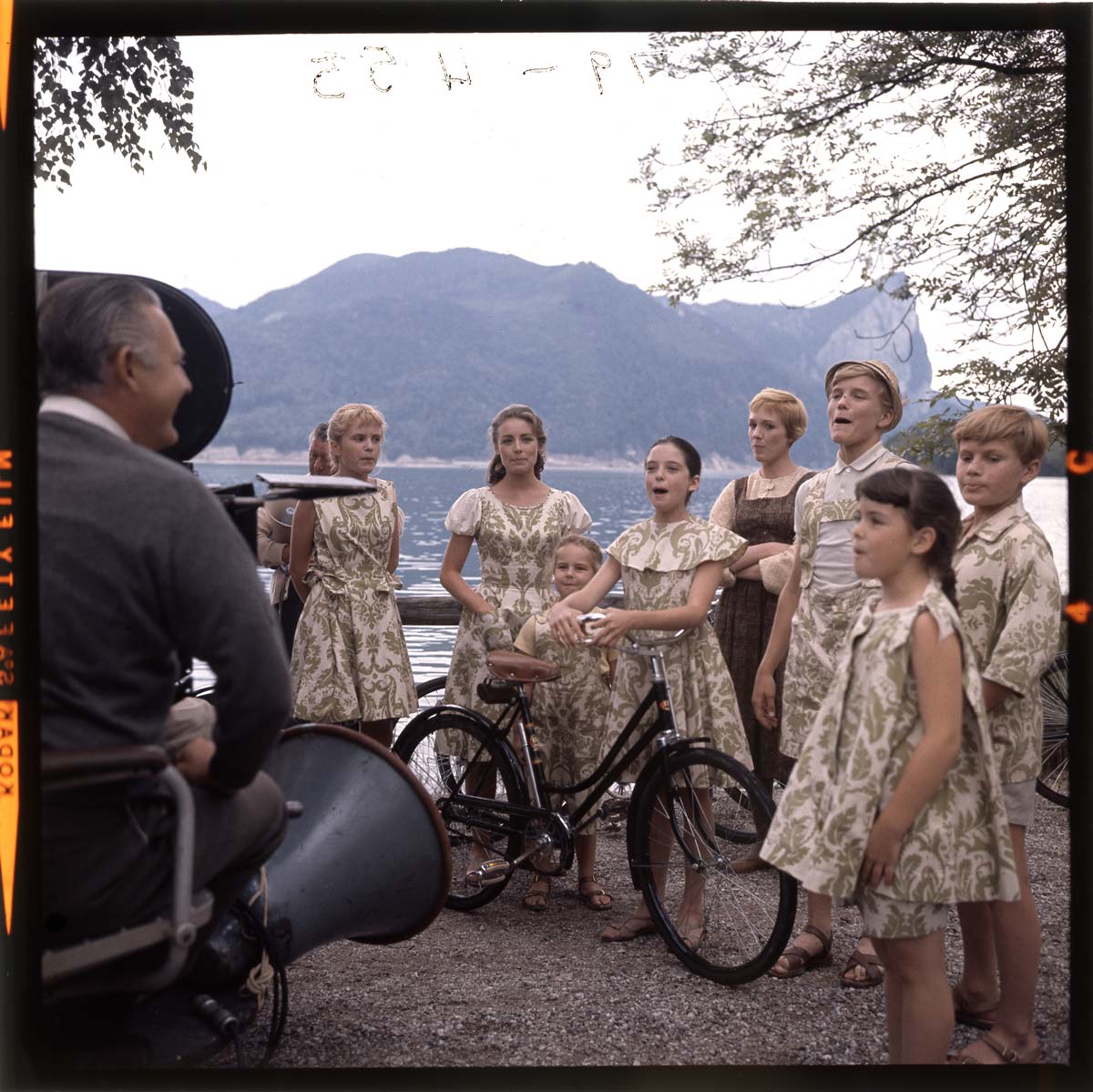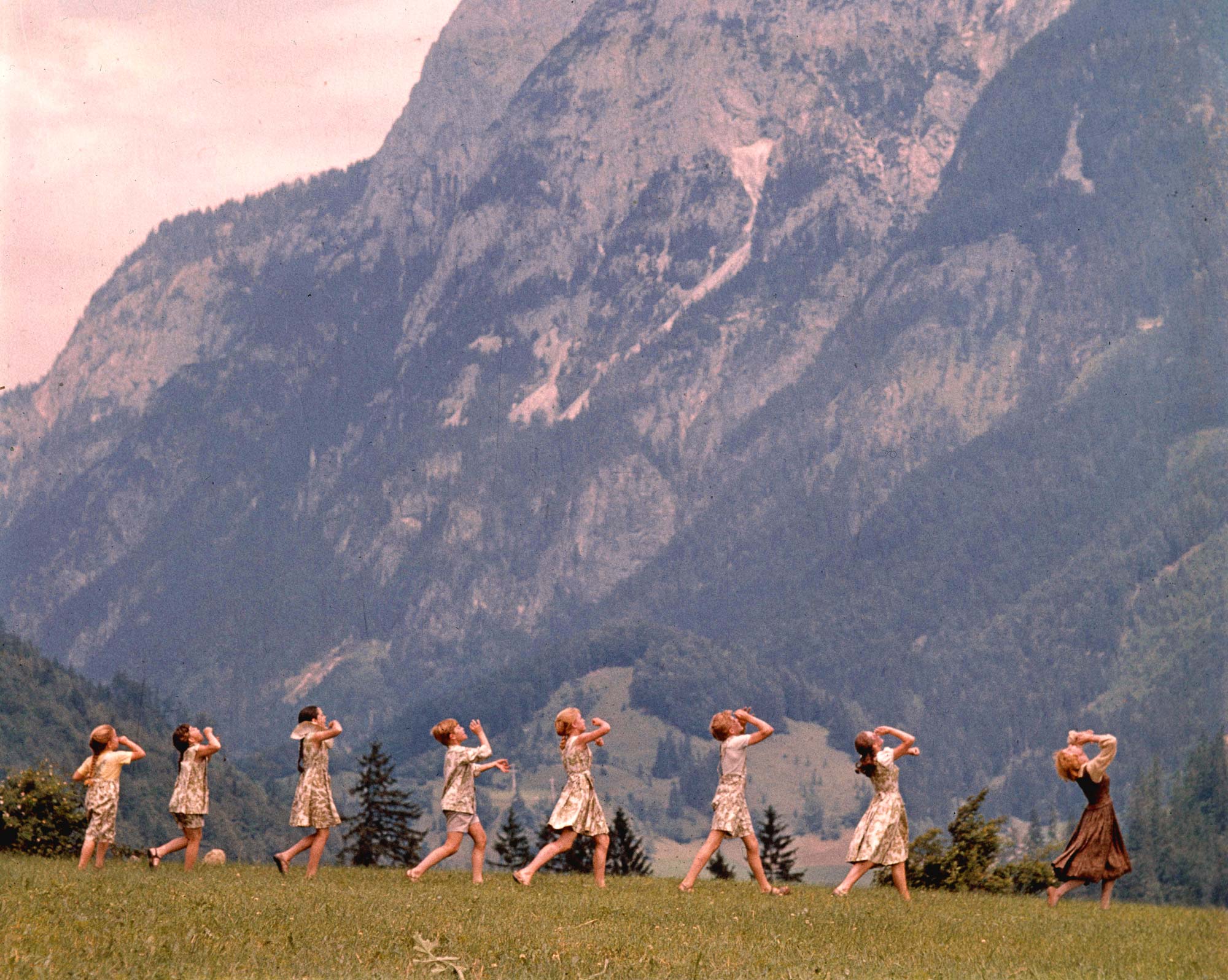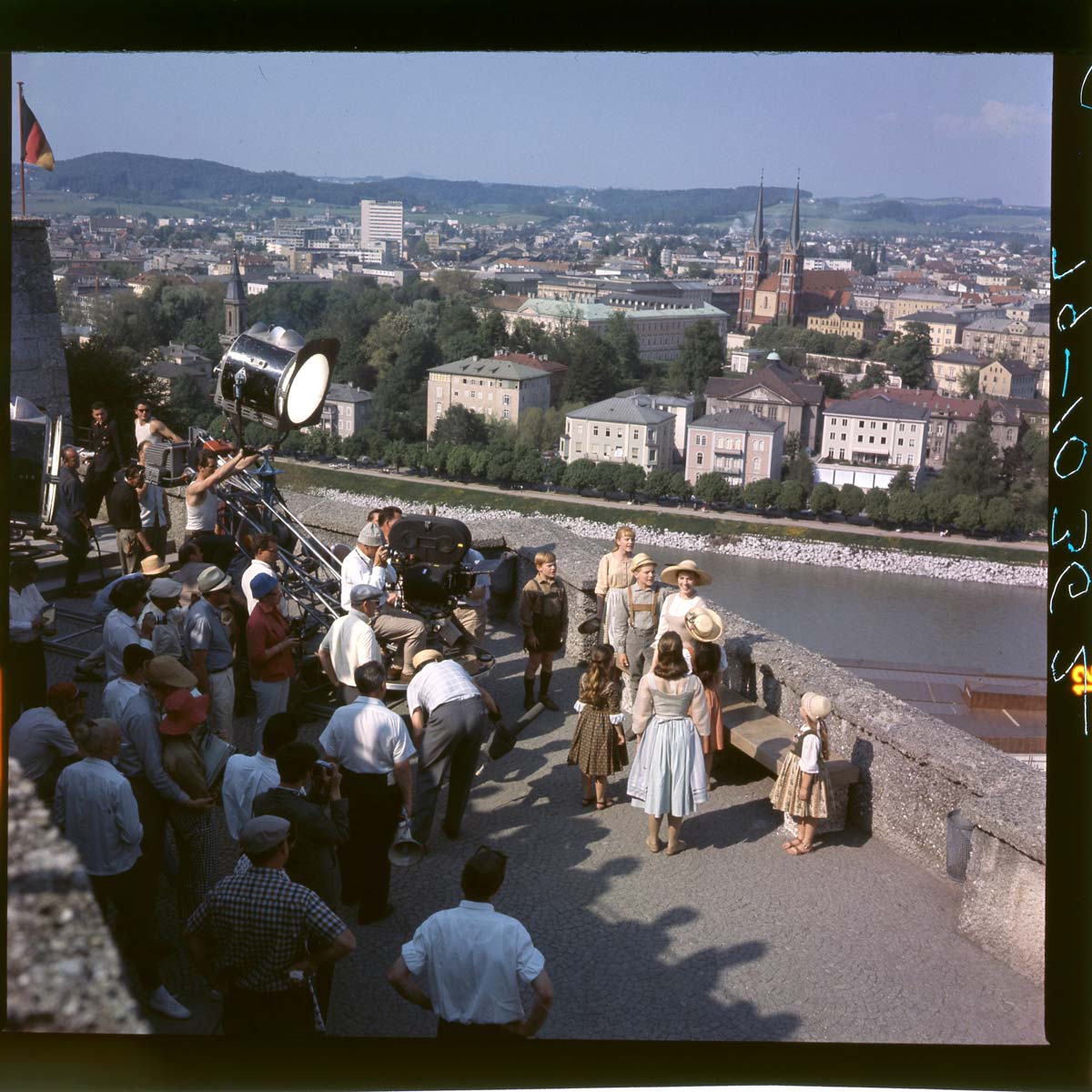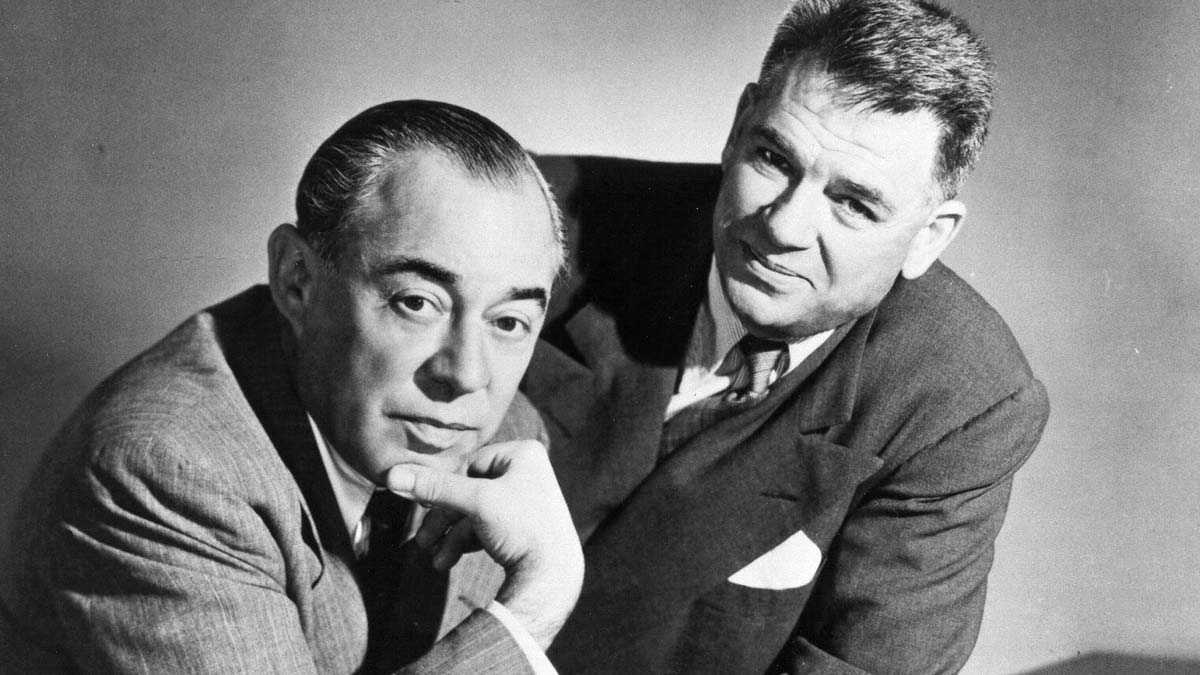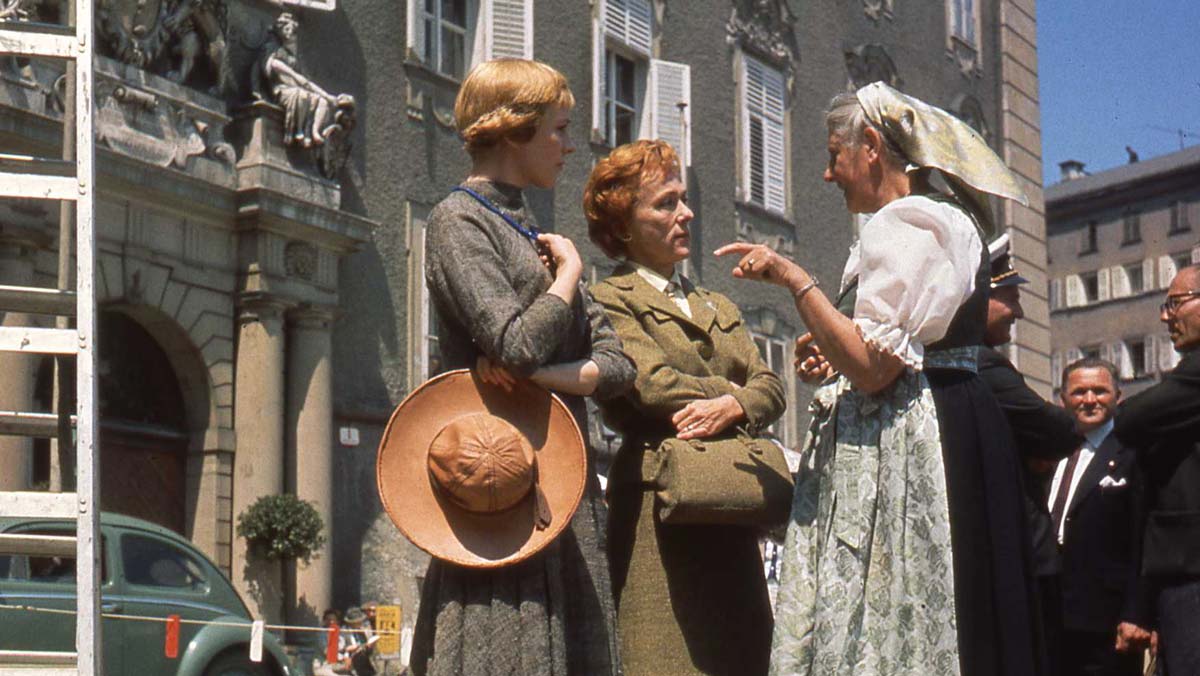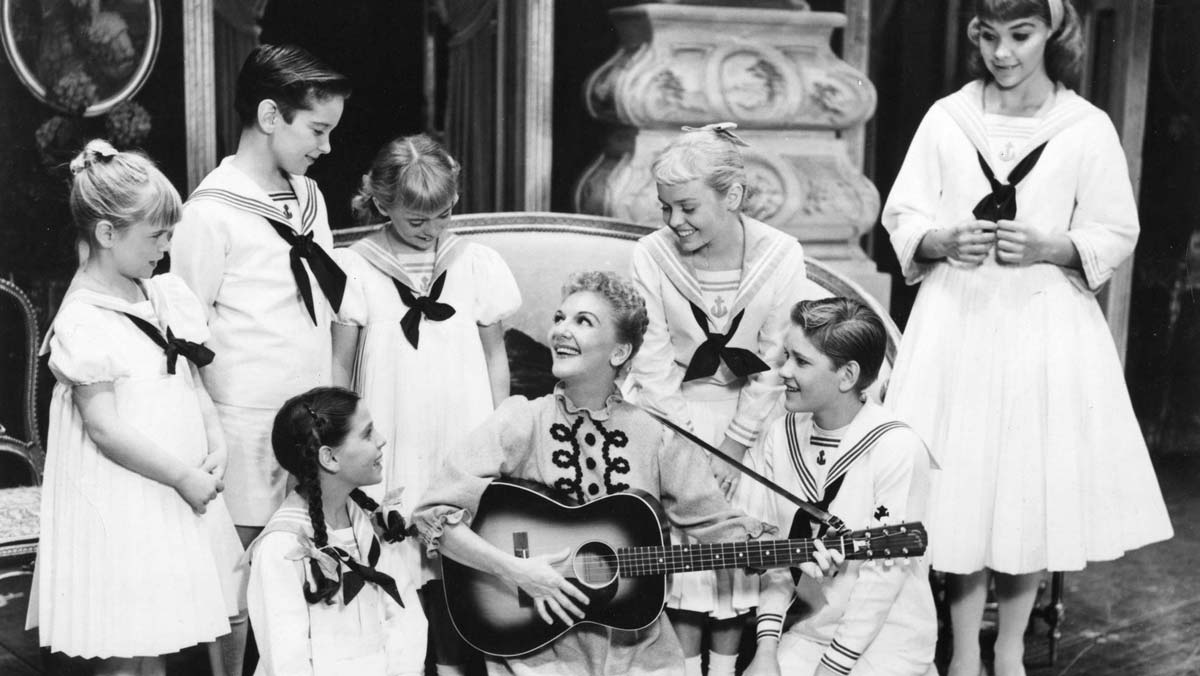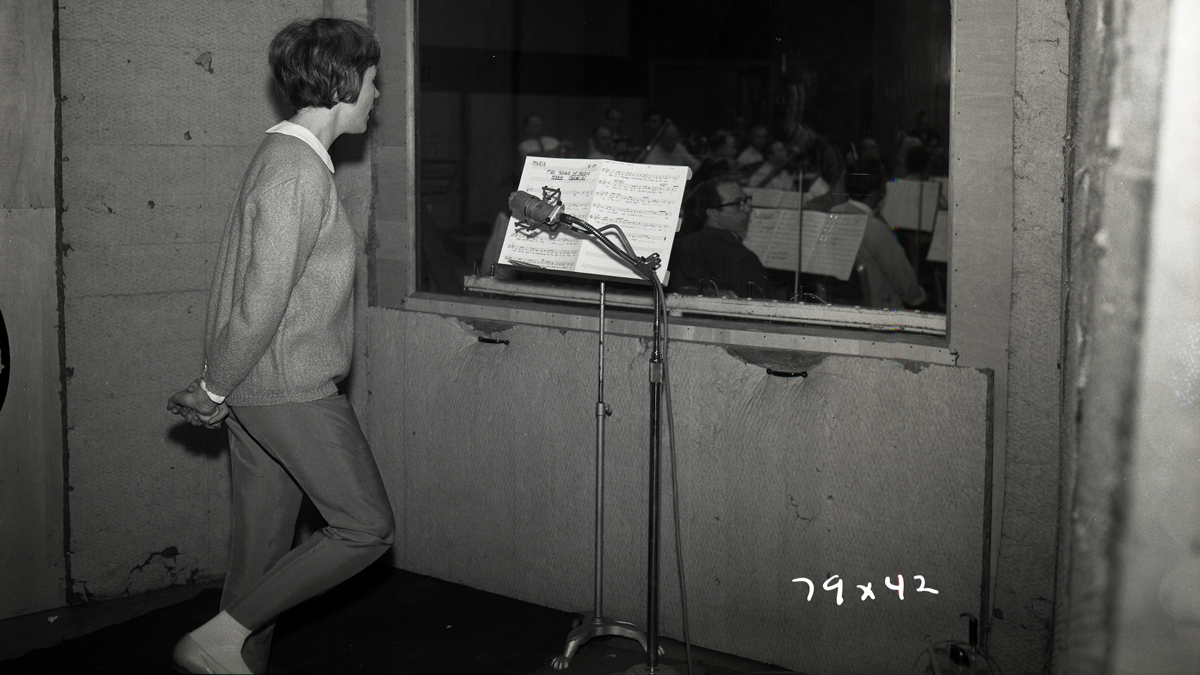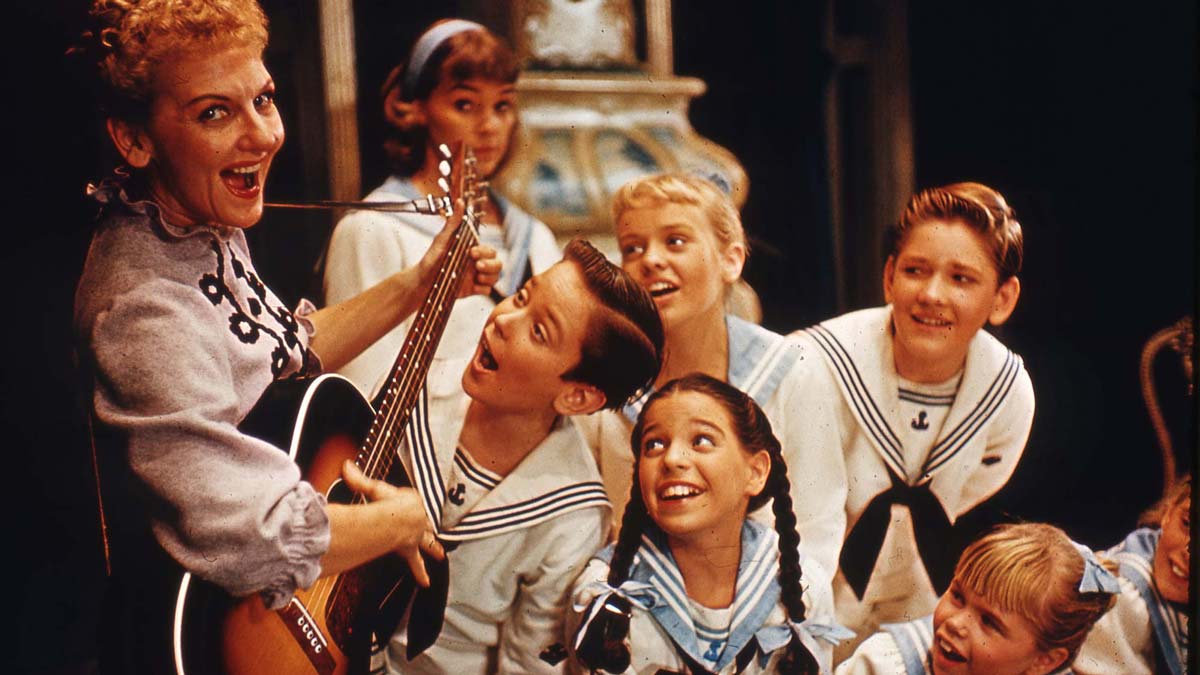ENTER SALZBURG: STAGE LEFT
When The Sound of Music made its not-so-inevitable transition from Broadway to Hollywood, it assured its success by promoting a minor stage character to a leading character in the film: the city of Salzburg.
The person who pulled Salzburg out of the chorus and made the city into a star was screenwriter Ernest Lehman. Lehman was no stranger to the worlds of Broadway—he had gotten his start placing show biz items into newspaper columns—or Hollywood, having collaborated on films for such titans as Billy Wilder and Alfred Hitchcock; he had even collaborated with Rodgers & Hammerstein previously, adapting The King and I for its 1956 CinemaScope release.
When Lehman received the assignment to adapt The Sound of Music in December of 1962, he began to break apart the stage show’s structure and re-imagine it playing out among Salzburg’s city squares, terraces, steps, riverbanks, and parks; in nearly every case that he introduced the actual Salzburg into the script’s locations, the original material was enhanced, reframed, and restructured. Lehman was using his intuition and skills he had acquired while working on another important assignment.
While The Sound of Music film project was waiting to be developed by 20th Century Fox, Lehman would earn acclaim—and an Academy Award nomination—for his screenplay for the 1961 film adaptation of West Side Story. One of the most unforgettable aspects of that movie was its use of location shooting—the brilliant exploitation of New York’s streets and cityscape—and that provided a road map and inspiration for Lehman’s treatment of The Sound of Music.
Location shooting for any kind of film creates headaches and bankrupts budgets; in the case of a musical film, the problems increase exponentially—dealing with sound playback, choreography, camera movement, the weather, and so on. Film producers tended to be reluctant to do location shooting for a musical: back in 1949, Gene Kelly and Stanley Donen had to beg MGM to let them shoot footage of the actual “New York, New York” for the opening of On The Town—it was the first musical to be filmed on location. Other films eventually followed suit: Oklahoma! was filmed on location (in Arizona, because Oklahoma in 1955 no longer looked like Oklahoma in 1900) and Oscar Hammerstein II himself had scouted the Hawaii locations for South Pacific. But stuffy backlot filming could badly stifle a musical’s expansive and expressive nature; painted clouds and a set of papier-maché Alps would do nothing to release The Sound of Music’s expansive “nature”—in every sense of the word.
When Lehman received the assignment to adapt The Sound of Music in December of 1962, he began to break apart the stage show’s structure and re-imagine it playing out among Salzburg’s city squares, terraces, steps, riverbanks, and parks; in nearly every case that he introduced the actual Salzburg into the script’s locations, the original material was enhanced, reframed, and restructured.
Of course, Lehman had to find a director to match his vision. After some extensive wooing, Lehman inveigled the Hollywood titan, William Wyler, to direct the picture and one of the first orders of business was for the director and screenwriter, script outline in hand, to fly to Salzburg and scout specific locations for the film.
Nestled in sight of the breathtaking Austrian Alps, Salzburg has always been one of Europe’s most magical cities. Founded 1,300 years ago, it has retained its magisterial appearance with its medieval fortresses, church spires, and baroque palaces, perched on two hills separated by the Salzach River. But the city was almost entirely unseen by American audiences in any mainstream movie. Salzburg would not only be making a splashy appearance in a Hollywood film; it would be a splashy debut as well. During their trip, Lehman and company discovered sites that were so extraordinary that the film adaptation accommodated their inclusion—the evocative, multi-tiered Rock Riding School, for example, would become the venue for the Von Trapps’ final concert performance.
Wyler, however, soon exited the project, but, as luck would have it, Robert Wise was suddenly available and he heartily embraced Lehman’s vision. The next step, in terms of “opening up” the stage script, was to storyboard the musical numbers in advance, so that the film’s choreographic team of Marc Breaux and DeeDee Wood could recreate Salzburg for rehearsals on the Fox backlot. Breaux was sent ahead to Salzburg, along with music director Saul Chaplin, to literally measure out every foot of space being used along the streets, lanes, steps, and bicycle paths, so that they could figure out their staging. When Chaplin came across the steps leading out of the Mirabell Gardens and realized that there were seven steps—one for each note in the musical scale—he knew right away that he had found the perfect setting for the conclusion of “Do Re Mi.”
Nestled in sight of the breathtaking Austrian Alps, Salzburg has always been one of Europe’s most magical cities. Founded 1,300 years ago, it has retained its magisterial appearance with its medieval fortresses, church spires, and baroque palaces, perched on two hills separated by the Salzach River.
Indeed, among the film’s many magical moments set in Salzburg, the montage of “Do-Re-Mi” (and the post-“My Favorite Things” montage that leads into it) is the most artfully reimagined from the stage version. The Broadway “Do-Re-Mi” took place in the foyer of the von Trapp villa, but, for these sequences, the film uses sixteen separate locations in Salzburg and its environs, whimsically changing up time and space. Robert Wise, who was also a first-rate film editor, understood how to exploit the medium for musical sequences: “In films, you get to do so much of the lyrics here, and then you cut here to another location and do the lyrics over there. That’s the advantage of film… it just worked wonderfully well.” Julie Andrews concurred, adding that “Robert Wise used ‘Do-Re-Mi’ to signify a passage of time, so that by the end of the song, the summer has passed… that montage was, to me, the quintessential moment of the film.”
Once Lehman realized how important Salzburg would be to the texture of the movie, he did an exemplary job of marrying the exterior locations to the narrative. Robert Wise and his crew were able to realize Lehman’s vision in a masterful way; rather than reproduce the clichés of a movie musical, Wise and company made a first-class movie that just happened to be a musical.
Lehman and Wise used Salzburg to another less tangible but more important end; the city locations helped ground the musical in a deeper, more substantive reality. When The Sound of Music opened on Broadway six years earlier, several critics felt the show was artificial and insubstantial. By relying on Salzburg’s gothic cathedrals, cobblestone streets, and verdant hillsides, the movie makes the story seem like it happened to real people in a real time in a real place—which, of course, it always did. No doubt the scenes with fictional Nazis marching through a Salzburg town square had resonant echoes of the actual Nazis that had marched through the same square only 25 years earlier (in fact, those scenes were filmed quickly and discreetly). Lehman himself thought of The Sound of Music as a “fairy tale that’s almost real.”
After all, when you’re singing about churches and brooks and stones in their way—it’s nice to look at the real thing, isn’t it?
Laurence Maslon is the author of The Sound of Music Companion as well as Broadway to Main Street: How Show Tunes Enchanted America. He also is the host of the weekly broadcast/podcast “Broadway to Main Street” on the NPR affiliate WLIW-FM.

